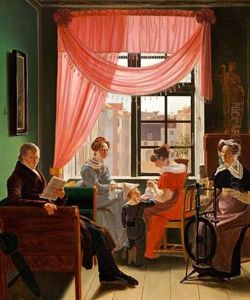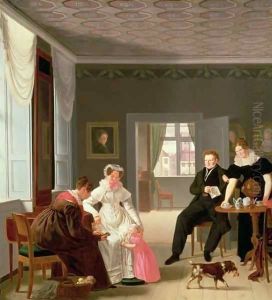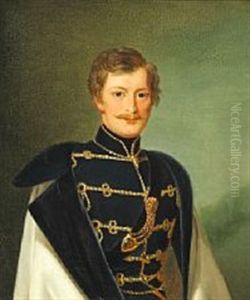Emilius Ditlev Baerentzen Paintings
Emilius Ditlev Baerentzen was a Danish painter and lithographer born on August 30, 1799, in Copenhagen, Denmark. His early artistic education is not thoroughly documented, but it is known that he developed an interest in the arts in his youth. Baerentzen initially made a name for himself as a lithographer rather than a painter, a medium that was relatively new at the time and which offered him opportunities to explore and innovate.
Baerentzen is often credited with introducing lithography to Denmark after learning the technique in Munich and Paris, cities that were centers for this printmaking process in the early 19th century. In 1826, he founded the Royal Lithographic Establishment (Det Kongelige lithografiske Etablissement) in Copenhagen, which became a significant institution for the production of lithographic works, including portraits, landscapes, and topographical views.
Throughout his career, Baerentzen was prolific in his output. He created portraits of many well-known figures of his time, which contributed to his popularity. His works were characterized by meticulous detail and a clear, realistic style, which was well suited to the lithographic process and appealed to the tastes of the Danish middle class.
Despite his success with lithography, Baerentzen also pursued painting, although his achievements in this field were not as prominent as his print work. He was a member of the Royal Danish Academy of Fine Arts and exhibited his paintings at the Charlottenborg Spring Exhibition on several occasions.
Baerentzen was not only an artist but also an entrepreneur, and his establishment played a crucial role in the dissemination of images and information in Denmark during his lifetime. He served as the royal court's appointed printer, which further established his reputation and provided a steady stream of commissions.
Emilius Ditlev Baerentzen passed away on August 14, 1868, leaving behind a legacy as a pioneer of lithography in Denmark. His contributions to the arts were significant in the development of Danish printmaking and in documenting the faces and landscapes of his era for posterity.























